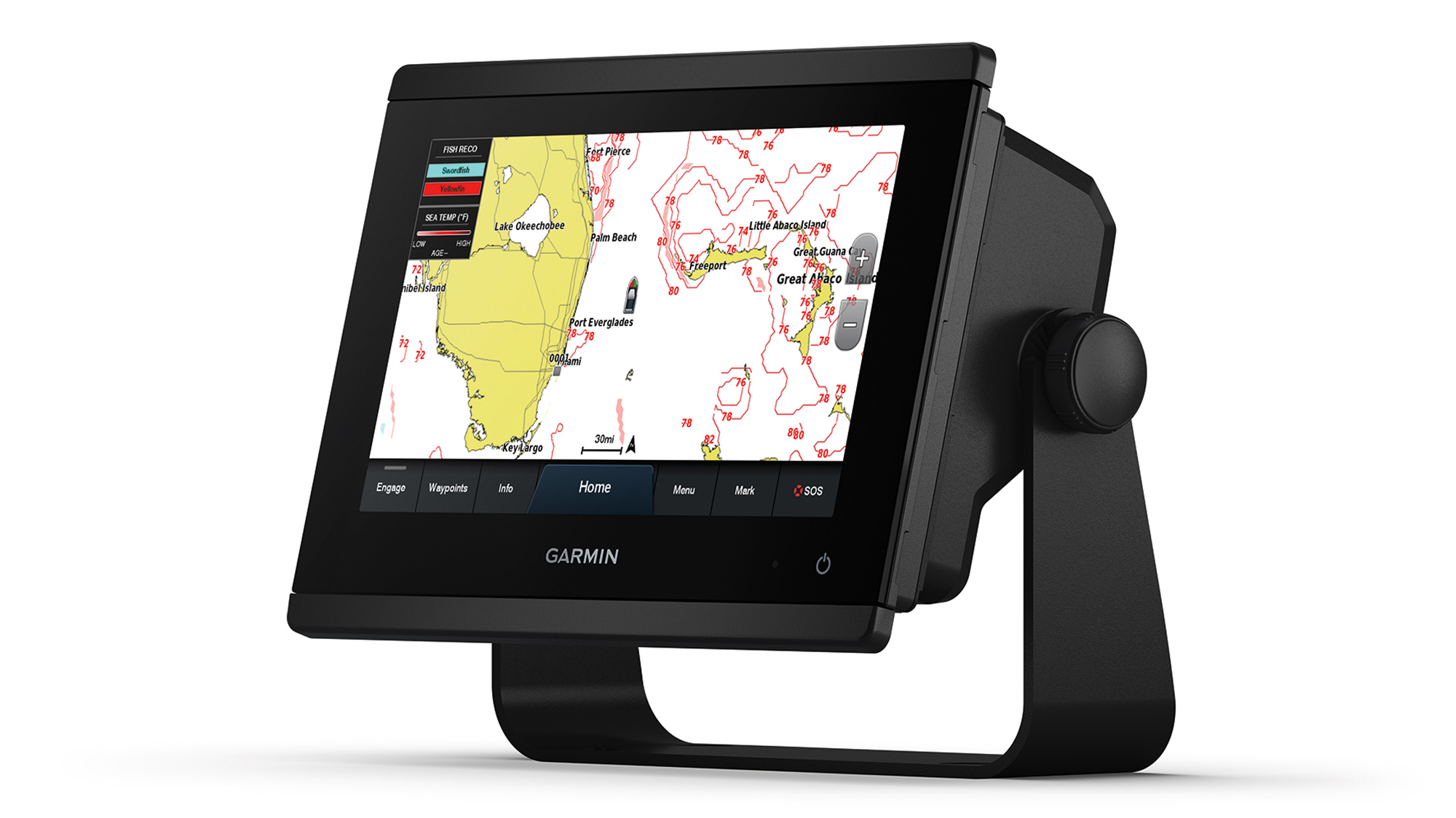Your buying guide for electronic navigation, featuring the Garmin chartplotter and models from Raymarine, B and G, Simrad, and more
Ali Wood weighs in on the Garmin chartplotter and other electronic navigation options from Furuno, Raymarine, B&G, Lowrance, Simrad, and Orca.
Furuno
Furuno NAVNet TZtouch3 plotter. Photo: Foruno.
Furuno’s NAVNet TZtouch 3 range is available in 10in and 13in screens. An ‘XL’ version is available in 16, 22 and 24in all-glass MFDs. ‘Hybrid control’ means you can edge-swipe and tap for the menu, or use buttons in rough sea conditions.
The TZ Cloud app means you can plan routes at home, which are then automatically saved to the MFD, or you can buy and update charts directly from the MFD as long as you have internet access.
The TZtouch 3 comes with a built-in fish finder with side scan. It can be linked with autopilots, AIS, GPS, sat compasses, and transducers for depth speed and temperature, and you can monitor engine data and other custom instrument data.
Raymarine
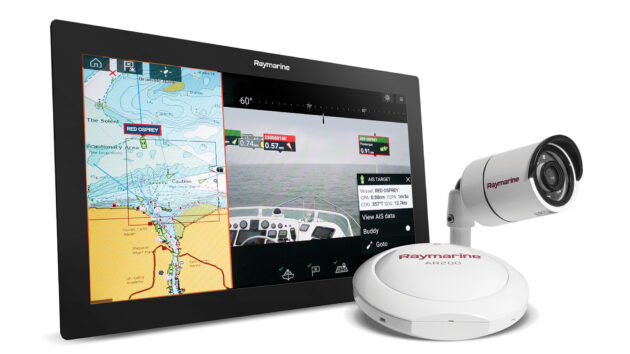
Raymarine AxiomXL and the AR200 augmented reality marine camera. Photo: Raymarine.
The Element S is Raymarine’s entry-level model, and the Element HV is the HyperVision sonar version of this. You then progress up to the Axiom+ with Lighthouse 4 software, giving you greater connectivity to use the display as a chartplotter, sonar, radar, autopilot, engine integration and more; the Axiom+ also has higher processing power, and touchscreen usage.
Next up the ladder, the Axiom 2 Pro brings HybridTouch technology to the interface, which is a benefit on rough passages and on outdoor spray-covered areas. This product is most popular with the sailing market, and also features advanced sailing integration such as polars and dynamic laylines, race timers etc.
At the top of the range is the Axiom 2 XL, which is the most powerful processing unit with superior networking. Raymarine’s Lighthouse software can be integrated with everything from lighting to Netflix and Spotify, so you can control your yacht’s electronic eco-system from the display.
B&G
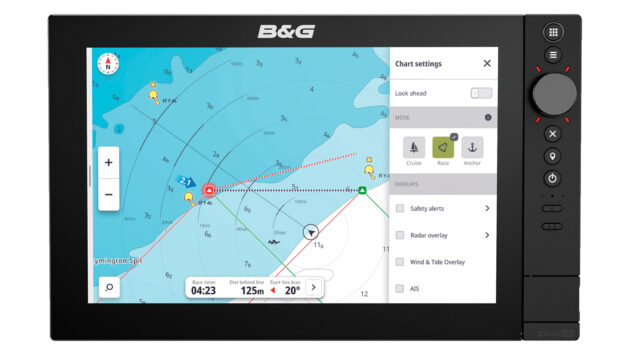
B&G Zeus is popular with both cruising and racing sailors. Photo: B&G.
B&G caters specifically for sailors and its entry-level Vulcan MFDs (7in and 9in) are easy-to-use multi-touch displays, and have dedicated sailing features for cruising or racing known as SailSteer, SailingTime, RacePanel and Laylines. It can be linked with radar, sonar and other instrument displays as well as the autopilot.
As you go up the range, the new Zeus SR, suitable for cruising and racing, is available in 10, 12 and 16in screens, and has an 8-core processor.
Lowrance
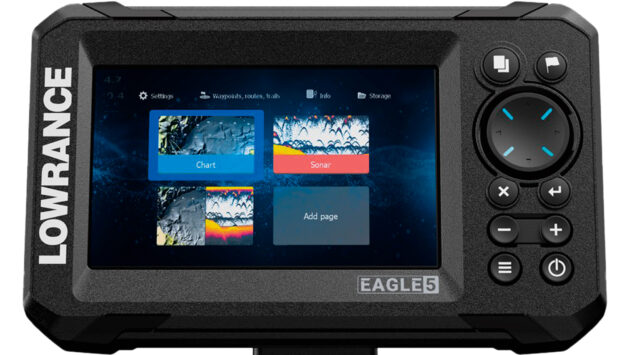
Lowrance Eagle 5 is great for fishermen. Photo: Lowrance.
The Eagle 5 isn’t a full MFD but comes preloaded with a worldwide base map; you’ll need to buy local cartography from C-Map or Navionics.
The small display and low power draw (280mA at 12 V DC with full backlight) make it an option for smaller boats and kayaks. FishReveal on DownScan, means anglers can identify fish separately from weeds and structures, while TripleShot provides side and underwater views of the seabed.
You don’t get the option to connect it to other electronics for wind and tidal overlays, radar, AIS, etc. For this, you’re looking at the Lowrance HDS Multifunction Display range in 9, 10, 12 and 16in displays.
Garmin chartplotter
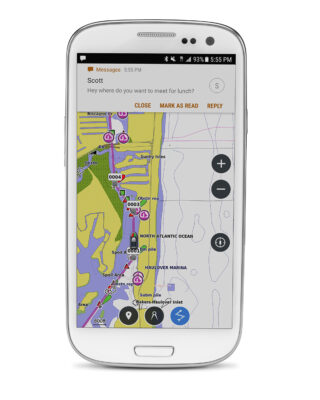
Garmin ActiveCaptain app on a smartphone. Photo: Garmin.
If you just want a marine handheld GPS with charts, Garmin chartplotter model GPSMAP 79s ticks the box. This uses AA batteries and has 19 hours battery life when using just GPS. It’s rugged, water- and shock-resistant and works with Garmin’s BlueChart charts.
For MFDs, Garmin has options in 7, 9, 12 and 16in screen sizes. The touchscreen GPSMAP 723 has built-in tide tables and is compatible with several different charts. As with other MFDs, it will support AIS, DSC, sonar as well as sailing features such as laylines and start-line guidance.
Using built-in wifi the MFD can be paired with your phone or tablet via the ActiveCaptain app, which allows you to remotely plan your trips on Navionics and mark waypoints, then automatically see them on your chartplotter.
Simrad
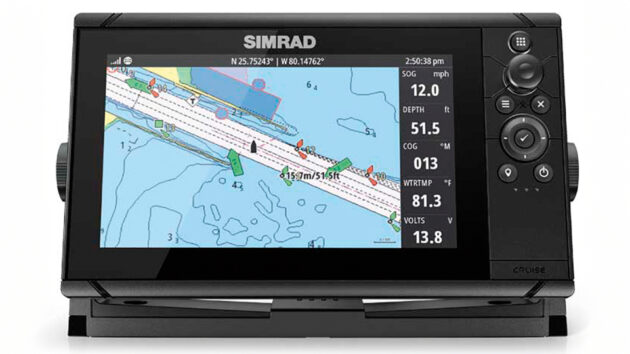
Simrad Cruise 5in display. Photo: Simrad.
Simrad’s button-controlled Cruise range of chartplotters is designed to be simple and intuitive. Available in 5, 7 or 9in display, it’s a chartplotter first and a depth finder second. For course plotting, select full-screen charts, or for a clear view of the bottom, select sonar. Or use the split-screen option for both. This is a standalone unit (not an MFD) that can be mounted inside or outside the boat, and comes with a small transducer.
Simrad also offers a range of MFDs, ranging in screen size, starting with the Simrad GO7 XSR which has sonar, wireless connectivity to smartphones and tablets, giving access to charts, radar and other functionality anywhere on board.
Orca
Orca’s ruggedised tablet, the Display 2, is aimed at boaters who prefer tablets to bespoke plotters. The Display 2 is a waterproof Samsung tablet that runs the Orca app. It pulls in instrument data from the Orca Core, a GPS wifi repeater for instrument data such as wind, depth and log, and plugs into the NMEA backbone.
The Display 2 runs any app from Google Play, so you can toggle with tide and wind, though it requires its own SIM card to work to full effect. You can download charts for offline use. AIS overlay is a core feature, as is radar and it integrates with most autohelms.
Comparing the Garmin chartplotter and other models
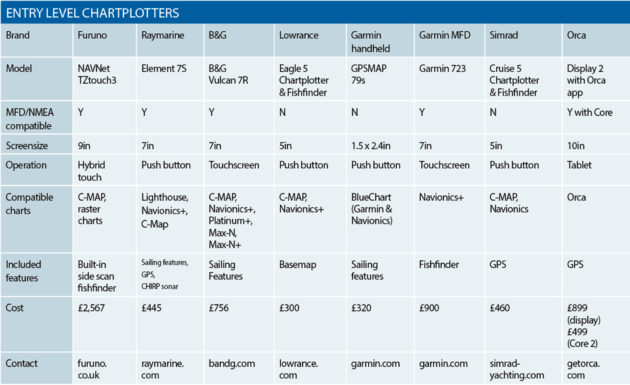
Chartplotter jargon buster
- ActiveCaptain (Garmin): an app that talks to your MFD from your mobile device, featuring OneChart (to buy and update charts), GarminHelm (for plotting routes) and Quickdraw Contours (to create maps with contours and depth labels)
- Basemap: scant detail, broad outline of a geographic region. Not for navigation
- Broadband radar: uses continuous transmission of microwaves, unlike traditional pulse radar, for close-range target detection
- DownScan (Lowrance): photo-like images of rocks, trees, bottom composition and other underwater structures directly beneath the boat
- FishReveal (Lowrance): boosts solid sonar returns while minimising weaker ones, resulting in clearly separated large fish targets from smaller baitfish and bait schools
- Forward scan sonar: forward-looking sonar gives a representation of the seabed ahead of the boat, identifying fish, potential hazards like shoals, reefs, or other obstacles
- Hybrid touch: an MFD that combines a touchscreen and physical keypad/ knob controls
- Laylines: a feature that calculates the optimal tacking or gybing angles to reach a windward or downwind mark
- Polars (Raymarine): also known as polar diagrams, these describe how fast a yacht goes at different wind speeds and angles. Modern yachts have a polar diagram or VPP (velocity prediction program) computed from hull shape, weight, rigging and sail setup
- RacePanel (B&G): aimed at racing sailors, this includes a visual of the start line on the chart, a timer, and tactical information for different legs based on wind and tide changes
- SailingTime (B&G): time to waypoint using layline data, rather than straight-line waypoint-to-waypoint route
- SailSteer (B&G): displays sailing data such as headline, wind, laylines and tide on a single screen
- Side scan sonar: images of the sea floor to the side of the vessel
- TripleShot (Lowrance): underwater views to the side and below the boat, all in one transducer
- TruEcho CHIRP (Furuno): fishfinder technology that uses a broadband transducer to transmit a wide range of frequencies.
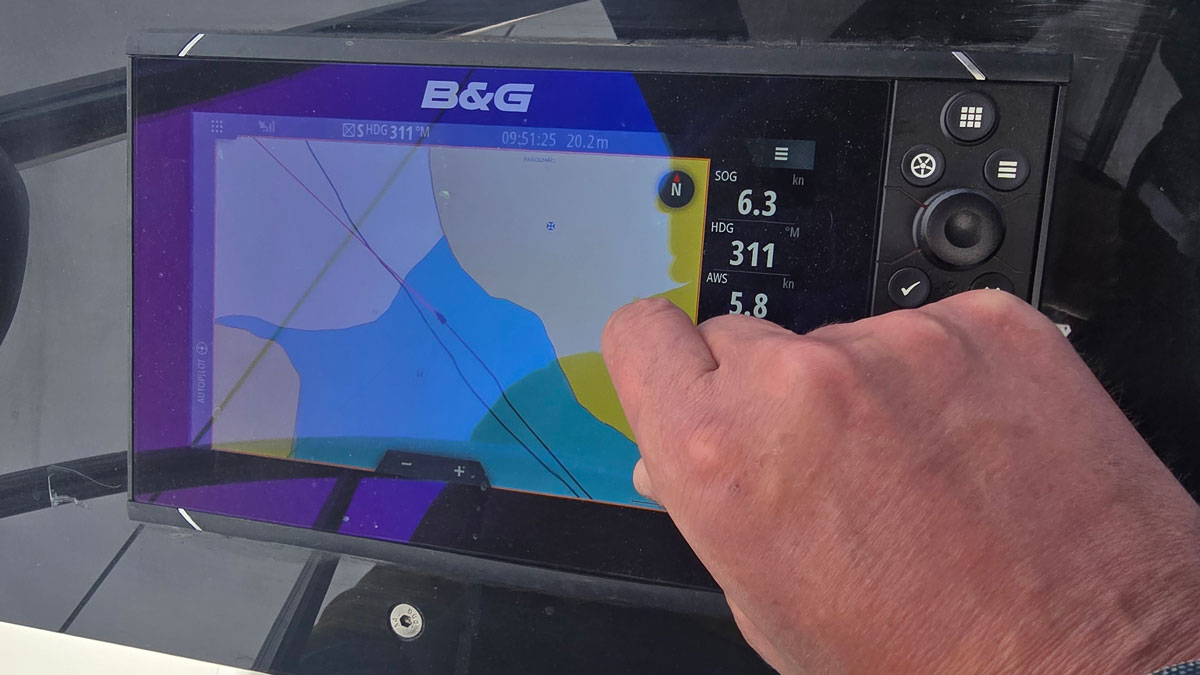
Whether you’re new to boating or looking to enhance your navigation with a phone, tablet or MFD, Ali Wood runs…
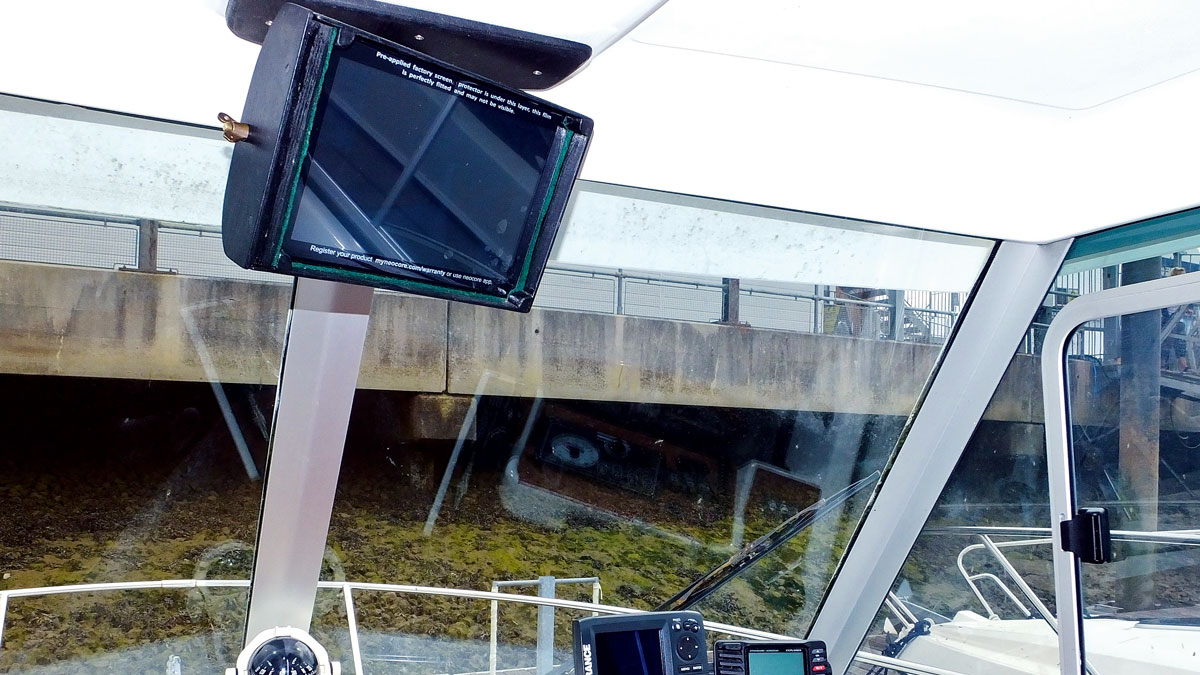
John Calton builds his own 10in touchscreen DIY chartplotter with GPS and AIS for a fraction of the cost of…
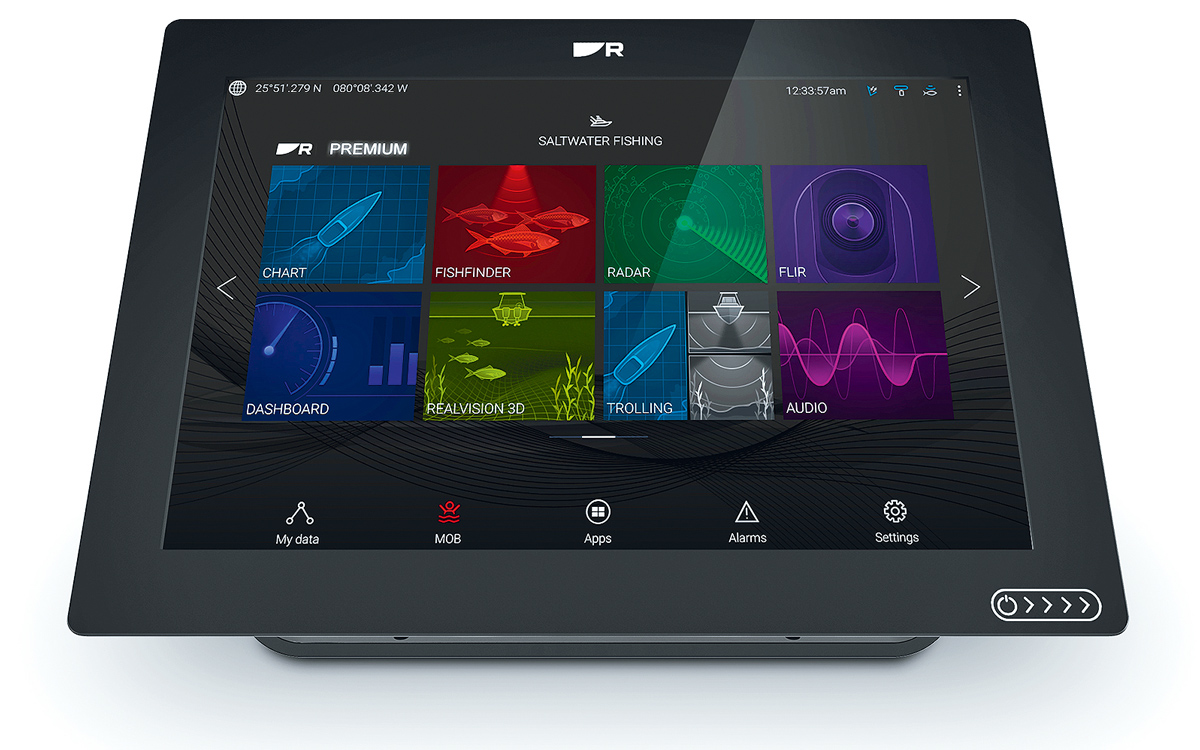
One of the best ways to choose new marine electronics is to get your hands on kit from a range…
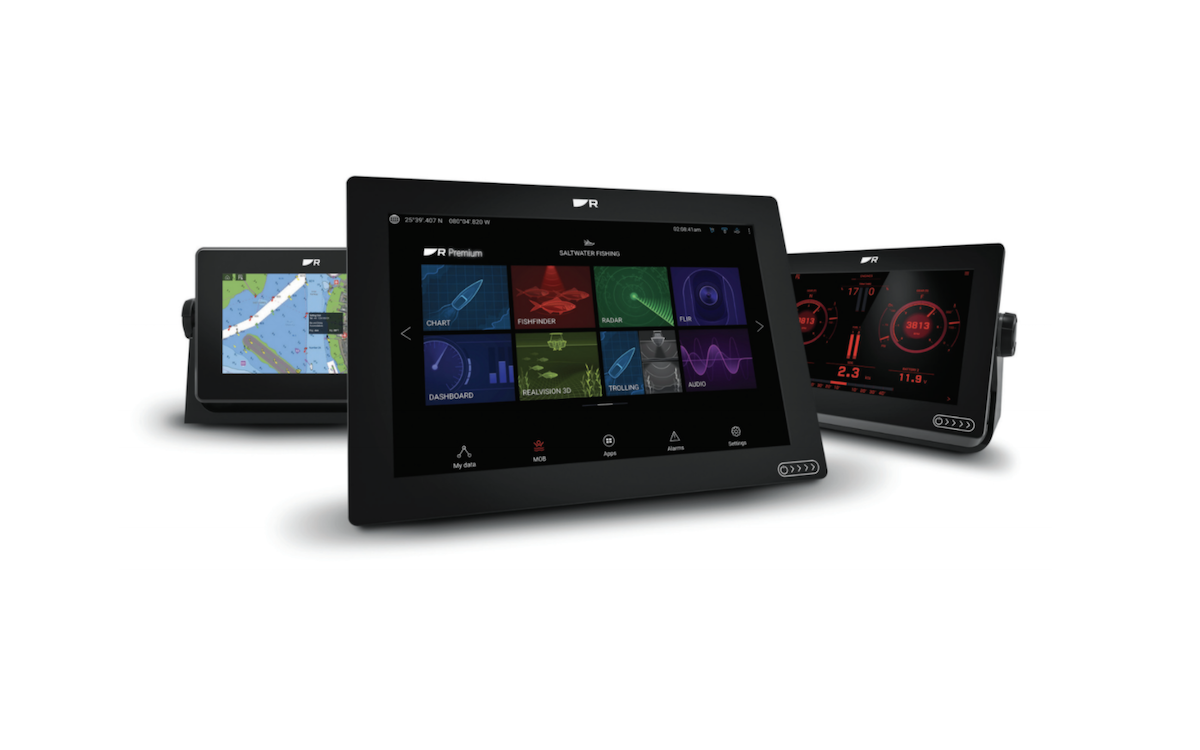
A few years ago I felt there was a risk that marine electronics manufacturers would find it impossible to compete…
Want to read more articles like this feature on the Garmin chartplotter?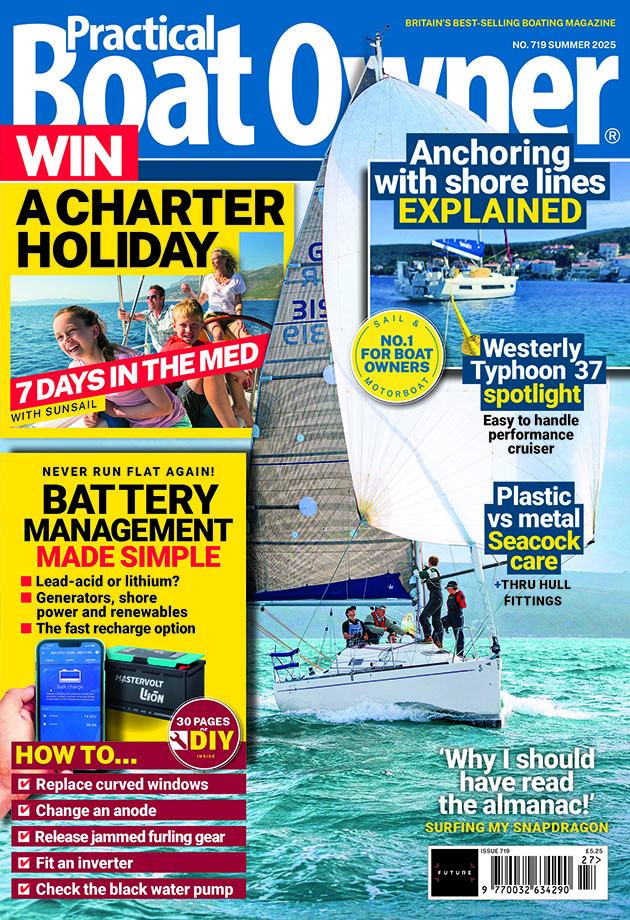
A subscription to Practical Boat Owner magazine costs around 40% less than the cover price.
Print and digital editions are available through Magazines Direct – where you can also find the latest deals.
PBO is packed with information to help you get the most from boat ownership – whether sail or power.
-
-
-
- Take your DIY skills to the next level with trusted advice on boat maintenance and repairs
- Impartial, in-depth gear reviews
- Practical cruising tips for making the most of your time afloat
-
-
Follow us on Facebook, Instagram, TikTok and Twitter
